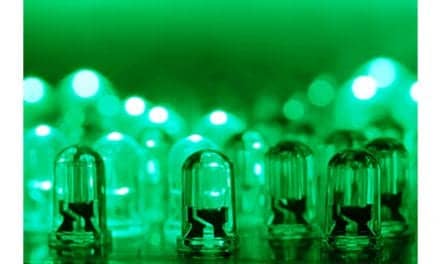Researchers from Florida Atlantic University’s College of Engineering and Computer Science and collaborators are aiming to enable a more natural-feeling prosthetic hand interface by incorporating stretchable tactile sensors using liquid metal and machine learning.
This hierarchical multi-finger tactile sensation integration could provide a higher level of intelligence for artificial hands by improving control, providing haptic feedback and reconnecting amputees to a previously severed sense of touch, they suggest, in the journal Sensors.
Encapsulated within silicone-based elastomers, this technology provides key advantages over traditional sensors, including high conductivity, compliance, flexibility and stretchability. This hierarchical multi-finger tactile sensation integration could provide a higher level of intelligence for artificial hands, a media release from Florida Atlantic University explains.
Tested on Fingertips
In the study, researchers used individual fingertips on the prosthesis to distinguish between different speeds of a sliding motion along different textured surfaces. The four different textures had one variable parameter: the distance between the ridges. To detect the textures and speeds, researchers trained four machine learning algorithms. For each of the 10 surfaces, 20 trials were collected to test the ability of the machine learning algorithms to distinguish between the 10 different complex surfaces comprised of randomly generated permutations of four different textures.
Results showed that the integration of tactile information from liquid metal sensors on four prosthetic hand fingertips simultaneously distinguished between complex, multi-textured surfaces — demonstrating a new form of hierarchical intelligence. The machine learning algorithms were able to distinguish between all the speeds with each finger with high accuracy. This new technology could improve the control of prosthetic hands and provide haptic feedback, more commonly known as the experience of touch, for amputees to reconnect a previously severed sense of touch, per the release.
“The tactile information from all the individual fingertips in our study provided the foundation for a higher hand-level of perception enabling the distinction between ten complex, multi-textured surfaces that would not have been possible using purely local information from an individual fingertip. We believe that these tactile details could be useful in the future to afford a more realistic experience for prosthetic hand users through an advanced haptic display, which could enrich the amputee-prosthesis interface and prevent amputees from abandoning their prosthetic hand.”
— Erik Engeberg, Ph.D., senior author, an associate professor in the Department of Ocean and Mechanical Engineering and a member of the FAU Stiles-Nicholson Brain Institute and the FAU Institute for Sensing and Embedded Network Systems Engineering (I-SENSE), who conducted the study with first author and Ph.D. student Moaed A. Abd
Compared Algorithms
Researchers compared four different machine learning algorithms for their successful classification capabilities: K-nearest neighbor (KNN), support vector machine (SVM), random forest (RF), and neural network (NN). The time-frequency features of the liquid metal sensors were extracted to train and test the machine learning algorithms. The NN generally performed the best at the speed and texture detection with a single finger and had a 99.2% accuracy to distinguish between 10 different multi-textured surfaces using four liquid metal sensors from four fingers simultaneously.
“The loss of an upper limb can be a daunting challenge for an individual who is trying to seamlessly engage in regular activities. Although advances in prosthetic limbs have been beneficial and allow amputees to better perform their daily duties, they do not provide them with sensory information such as touch. They also don’t enable them to control the prosthetic limb naturally with their minds.
“With this latest technology from our research team, we are one step closer to providing people all over the world with a more natural prosthetic device that can ‘feel’ and respond to its environment.”
— Stella Batalama, PhD, dean, College of Engineering and Computer Science
[Source(s): Florida Atlantic University, Science Daily]
Related Content:
Össur’s New Rebound Post-Op Elbow Brace is Lightweight and Intuitive
Walkasins Incorporation Into Artificial Limbs is Aim of $1M DOD Grant
BioPrax Biofilm Disruption Device Receives FDA Breakthrough Nod





